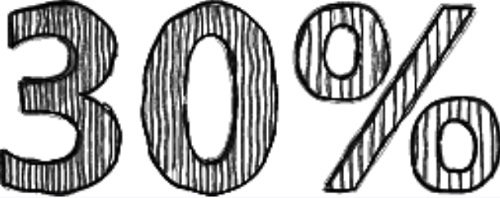
June 12, 2013; Portland Business Journal
NPQ has had a number of stories on overhead lately, including our blockbuster today where three prominent organizations are calling for an end to the overuse of overhead as a measure of grantworthiness but what about when nearly no money of what is raised goes to program? Oregon has now enacted the nation’s toughest law on spending by nonprofits. The law will pull eligibility for the state charitable tax deduction for donations from charities that do not spend at least 30 percent of their donations “to support their mission.” Charities that fall short of the 30 percent threshold are required to disclose that information or face a penalty of up to $25,000.
Given recent debates within the nonprofit sector about the content and levels of nonprofits’ administrative or overhead expenditures, including debates on this webpage, the text of the bill is worth examining to determine how the state law defines the operative terminology and allows for exceptions under “extenuating circumstances.” The final version of the legislation—House Bill 2060—contains the pertinent provisions: The measurement of spending on program services is based on the charity’s expenditures over the previous three fiscal years. According to the bill, “The calculation of program services expenses and total functional expenses shall be based on the amounts of program services expenses and total functional expenses identified by the organization in the organization’s Internal Revenue Service Form 990 return or other Internal Revenue Service return…”
Sign up for our free newsletters
Subscribe to NPQ's newsletters to have our top stories delivered directly to your inbox.
By signing up, you agree to our privacy policy and terms of use, and to receive messages from NPQ and our partners.
That means what nonprofits put on their 990s isn’t just important for how donors search for relevant information, but for how the attorney general in Oregon will determine if nonprofits qualify for the state’s charitable deduction. According to the Urban Institute, the error rate on nonprofits’ e-filed 990s is only one percent but 30 percent for non-e-filed 990s. The IRS says the error rate for paper-filed 990s is 25 percent. By errors, however, these reports largely refer to mistakes such as putting information in the wrong lines or categories, not intentional misclassification of information. For example, according to a 2012 report, 41 percent of the nearly 38,000 charities that raised $1 million or more reported no fundraising expenses at all, and the remaining 22,000 charities that did report fundraising expenses reported that their fundraising cost them 7 cents on the dollar. It isn’t clear from the Oregon bill whether and how the Oregon AG would potentially challenge the accuracy and veracity of potentially misreported spending data.
The law does allow charities to contest findings that they spend below the 30 percent program-spending threshold based on having made payments to affiliates that should count as program expenditures or other mitigating purposes. The press coverage of the bill suggests that a typical mitigating circumstance would be raising money for a capital campaign.
Typically, state nonprofit associations resist legislative efforts to define nonprofit efficiency or to limit nonprofit fundraising expenditures as a proportion of overall nonprofit expenses, but in this case, the Nonprofit Association of Oregon endorsed the bill. NAO issued a statement that reads, in part, as follows:
NAO believes that a “minimum floor” of 30% will easily identify those under-performing charities that, year-after-year, devote only a fraction of donated funds to their program mission. These organizations are anomalies, draining away charitable donations from effective charities providing essential services to our communities… NAO views HB 2060 as an important step in distinguishing between the vast majority of high-performing nonprofits and those that are clearly not…NAO is mindful that setting a blanket threshold has some risks. There may be legitimate reasons why a worthwhile charity could fall below even the 30% expenditure minimum. We believe that HB 2060 recognizes authentic reasons for under-performance and creates appropriate exceptions…NAO estimates that HB 2060…would not cause any undo harm or reporting burden to the vast majority of nonprofits operating in Oregon, but will go a long way to upholding the integrity of our sector.
We suspect that the NAO position may not be totally supported by other state associations. We would like to hear from supporters and critics of the Oregon bill and have them explain why a 30 percent minimum program expenditure requirement is or isn’t a workable mechanism for state oversight of legitimate charitable performance.—Rick Cohen














